1. Introduction
In this tutorial, we’ll discuss agentic AI, which has been making headlines worldwide in recent times. It is seen as the next epoch of evolution in the journey of artificial intelligence. Agentic AI systems are designed to operate autonomously, can adapt to changing environments, and can even make decisions. As we’ll see further, this has immense implications for its application.
2. What Is Agentic AI?
Before we proceed to take more details, let’s understand what formally constitutes an AI system. While there is no one formal definition of Agentic AI, it’s generally accepted as a type of artificial intelligence that can operate autonomously. This means it’s capable of making decisions and taking actions to achieve a specific goal with minimal human intervention.
To understand this better, let’s compare it with traditional AI systems, such as chatbots. Now, a chatbot takes a user query and works with a generative AI model to perform natural language processing to generate a response:
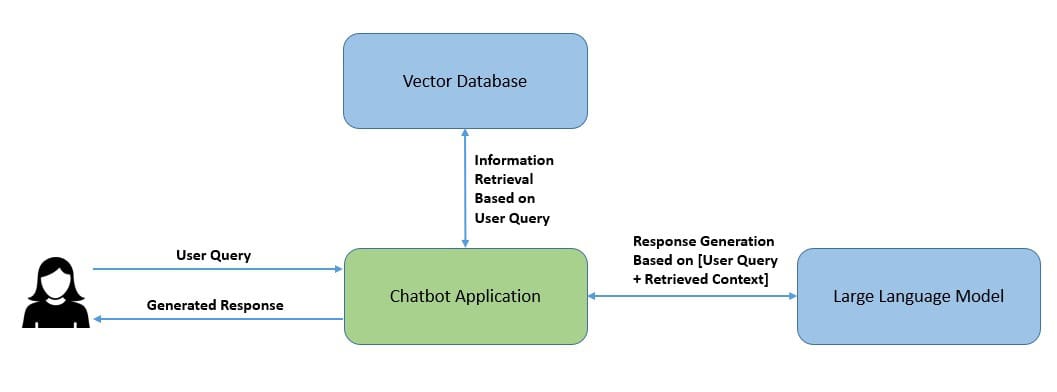
So, if we ask a well-defined question, we can expect to get a very precise answer. If we’ve a complex problem, we often have to break it down into smaller problems for AI to be efficient. In other words, such AI systems are reactive.
Now, this is largely because decomposing a complex problem requires the application of reasoning, something traditional AI has not been very good at. This is what agentic AI promises to change:
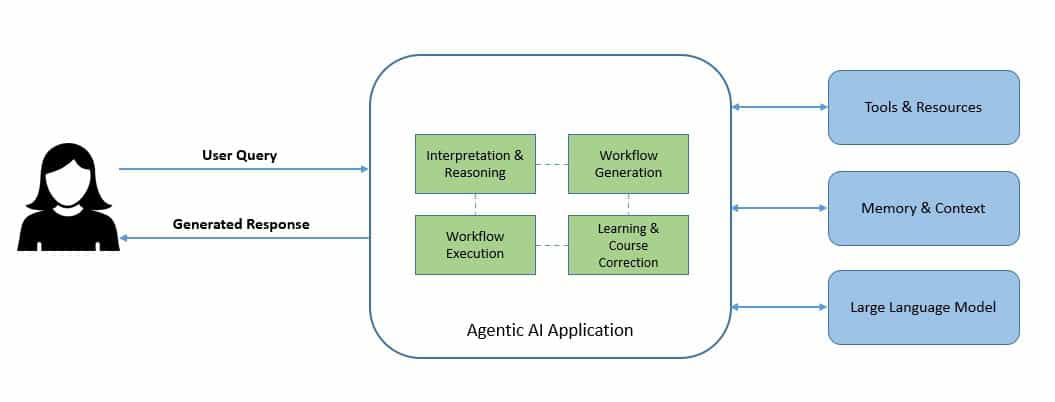
Agentic AI can use sophisticated reasoning and iterative planning to solve complex multi-step problems. For instance, an autonomous driving system navigating a route in real-life traffic. Hence, such AI systems start to become proactive.
This trend is largely fueled by recent advancements in machine learning algorithms and the ever-increasing processing power needed to develop more sophisticated AI models. This area is changing every day, if not every hour! Hence, we’ll see dramatic evolution in the capabilities of agentic AI systems and their real-world applications.
3. A Closer Look at an Agentic AI System
Let’s have a closer look at what an agentic AI system constitutes. As we’ll see in this section, multiple components come together to help it plan, remember, act, and learn. Further, it often involves a collaboration of various AI agents. Here, AI agents are designed for narrow tasks with limited autonomy. Memory systems and tools can individually supplement each AI agent:

Through this collaboration, an agentic AI system learn from interactions and adjusts its strategies to solve multi-step problems. Thus, the agentic AI system appears as a multi-agent AI system. Today, there is no single definition of agentic AI. So, even a single AI agent can be said to exhibit agentic behaviors. But, the real potential lies when several AI agents collaborate cohesively!
3.1. Planning & Goal Decomposition
First and foremost, an agentic AI system must be capable of breaking down complex problems into smaller, manageable problems to solve them in a step-by-step manner. For instance, let’s consider a problem statement: “Send an email with the summary of the top-performing stocks as of this morning listed on an exchange“:

Here, an agentic AI system should be able to decompose this problem statement into sub-problems. Then it should create a plan of execution, along with identifying different tools that it may need to accomplish each step. Moreover, such a system should also be able to infer unstated details and ask for clarifications wherever required.
With older LLMs, it was possible to achieve this through sophisticated techniques like chain-of-thought prompting. However, the range of modern reasoning-based models is capable of performing this internally without any external help. For instance, the OpenAI o1, o3, and 04 family of models continue to show better results with large-scale reinforcement learning.
3.2. Memory & Context Handling
Another important part of an agentic AI system is memory and context handling to perform complex tasks. As it operates over time, its ability to recall what has been done previously proves critical to how efficiently it can handle a new problem. Depending on the use case, an agentic AI system can use short-term and long-term memory in close collaboration:

Here, short-term memory is typically managed through the context window, which is the amount of text a model can process at one time. The context window is limited and not persistent. Hence, it’s only good for holding information about recent steps and results. On the contrary, long-term memory is embedded in a vector space, and queries are made when needed with semantic similarity.
Nevertheless, all types of memory finally get fed to the model as its context. Hence, an agentic AI system’s ability to pull all relevant memories and create the necessary context is quite important. It needs to perform context injection with optimization techniques like summarization of history and role conditioning, etc.
3.3. Tool Use & Real World Interaction
A crucial aspect of agentic AI systems is their capacity to extend beyond information processing and text generation. This is largely possible because they are able to use external resources for specific tasks. For instance, if the system realizes that it needs to fetch the current stock prices, it can use a tool that knows how to make the necessary API calls and fetch the relevant data:
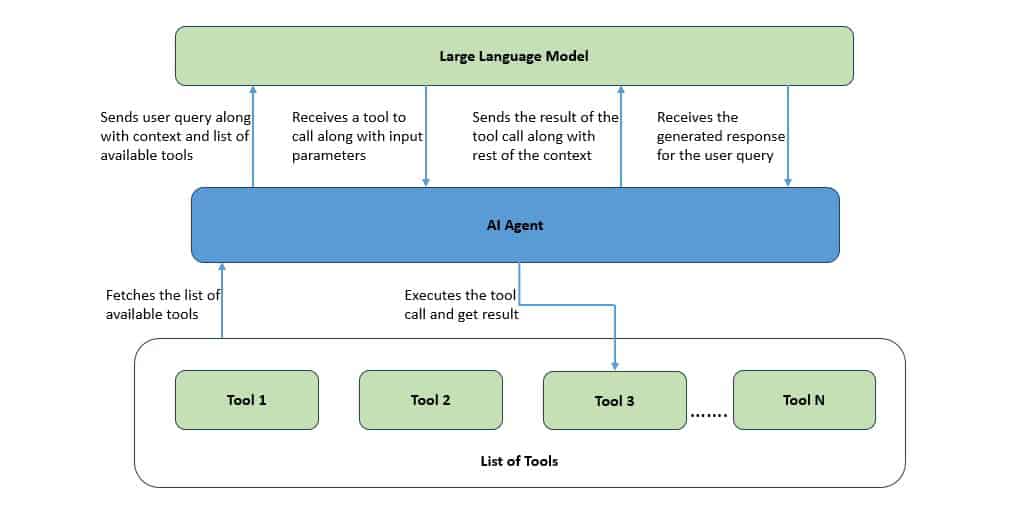
Here, we make available a list of tools with structured metadata to a model that can utilize it. The model selects an appropriate tool to perform a task and generates its input parameters. The agentic AI system makes the call and passes the result back to the model for further processing. Typically, the model may choose to use several tools.
We also know this as function calling, and it has significantly enhanced the abilities of LLMs to provide a conversational experience with real-world applications. These tools can be of several types, like simple functions, API calls, and code execution environments, or even productivity tools. This has increased the efficiency and accuracy of agentic AI systems.
3.4. Feedback & Reflection Loop
Another important part of an agentic AI system is that it learns as it operates and tends to get better at solving complex problems. This is possible through a feedback and reflection loop. This helps such systems to reflect on their past steps, evaluate outcomes, revise strategies, and even update memory or retry certain tasks:
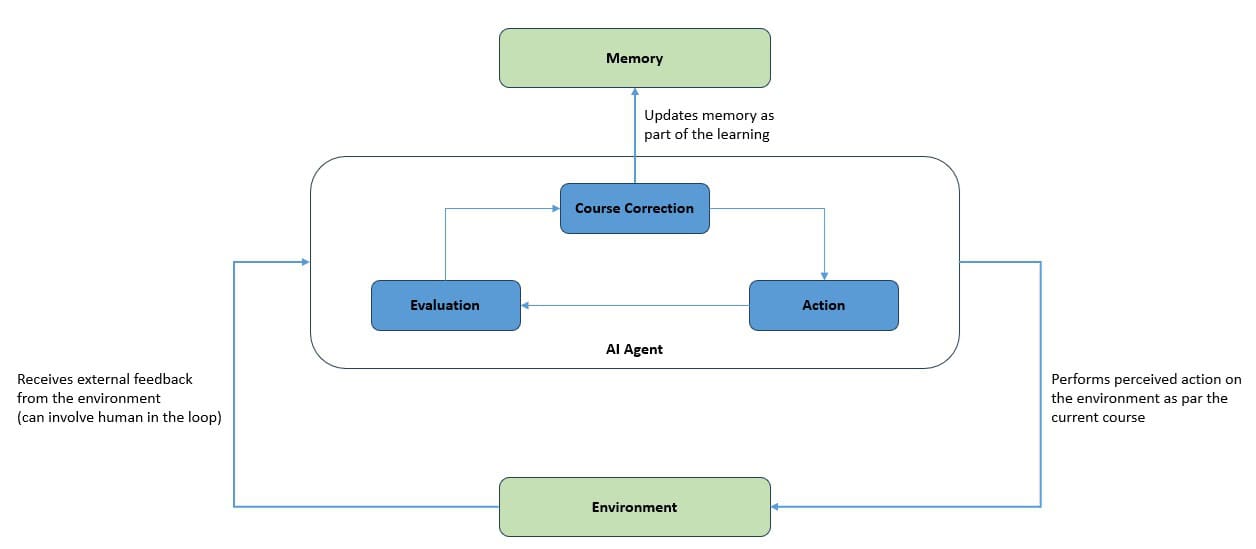
Here, feedback refers to the assessment of how well a task was done. This is typically received from the environment or a user. On the contrary, reflection refers to the system’s reasoning about what it did. For instance, after each step, like a tool call, the system can review the result and compare it against the goal.
In some cases, we can also use a separate model to act as the critic of an agentic AI system. It can help to score the tasks, summarize the outcomes, and even suggest improvements. Overall, the feedback and reflection loop helps such systems to improve accuracy and performance, reduce biases, and increase robustness.
4. Agentic AI Ecosystem
As the power of agentic AI systems is sweeping across different industries, the ecosystem that supports such systems is also growing at an unprecedented scale. This includes the introduction of powerful reasoning-based models almost every week; frameworks to help build agentic AI systems; protocols and standards to make them interoperable; and a growing list of tools to support the infrastructure to host, monitor, debug, explain, and rectify these systems.
4.1. Reasoning-based Models
The most important evolution that has fueled the growth of agentic AI systems is that of the large language models themselves. The introduction of the OpenAI 01 family of models in September 2024 is generally considered the beginning of this race. Soon afterwards, every major player in the field had a model offering capable of performing complex reasoning tasks.
Subsequently, OpenAI came with the 03 and 04 families of models, claiming to perform far better than the 01 family. Soon after, in January 2025, DeepSeek came up with DeepSeek-R1, their first generation of reasoning-based models. It demonstrated that the reasoning patterns of larger models can be distilled into smaller models, resulting in better performance:
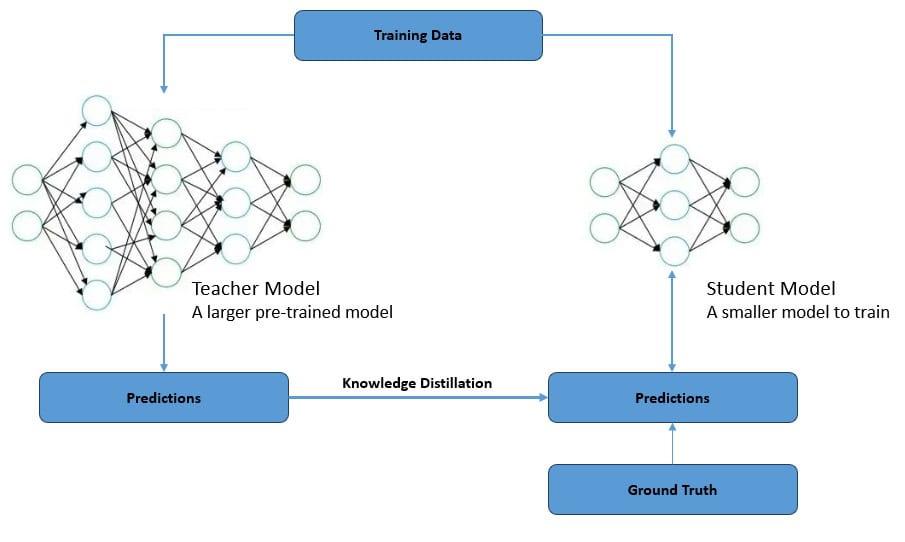
Other players were not much behind in this game. Google came up with Gemini 2.5 in March 2025. Anthropic introduced Calude 4 Opus and Sonnet in May 2025. These recent models claim significant improvements in solving complex multi-step problems, as evident in their published benchmark results. However, the race has just started!
4.2. Agentic Frameworks
An agentic AI system comprises multiple agents collaborating closely, each with its own memory, tools, and knowledge bases. Constructing such a system requires a lot of boilerplate code. Thankfully, several frameworks exist today that offer building blocks necessary to create an agentic AI system with ease. Many of these also come with graphical interfaces to define agents.
One of the earliest frameworks of this kind is LangChain. LangChain is an open-source framework that provides tools, abstractions, and integrations for developing applications powered by large language models (LLMs). LangChain ecosystem also has LangGraph, a library built on top of LangChain to facilitate the creation of complex, stateful, multi-agent applications:
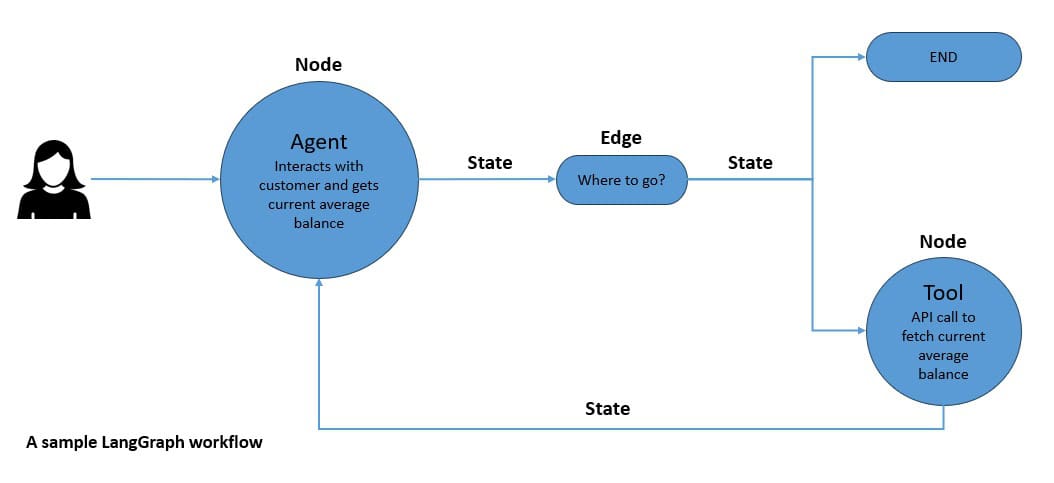
Another popular agentic framework is CrewAI. It’s also an open-source framework with powerful features like tools for multi-agent orchestration, role-based architecture, and autonomous decision-making. Then there are frameworks like Microsoft AutoGen, Microsoft Semantic Kernel, LlamaIndex, Haystack, etc. The list keeps growing every day!
4.3. Protocols and Standards
As the agentic AI ecosystem is growing, it’s becoming difficult to create and manage large-scale agentic AI systems. There are concerns like interoperability between agents, tool integration at scale, modularity within the ecosystem, to name a few. This requires robust and widely accepted standards and protocols, similar to HTML and HTTP for the web.
Although this is a very nascent area but there are already a few interesting protocols taking shape. For instance, Anthropic proposed the Model Context Protocol (MCP), an open protocol that standardizes how applications provide context to LLMs. MCP follows a client-server architecture where a host application can connect to multiple servers using one client per server:
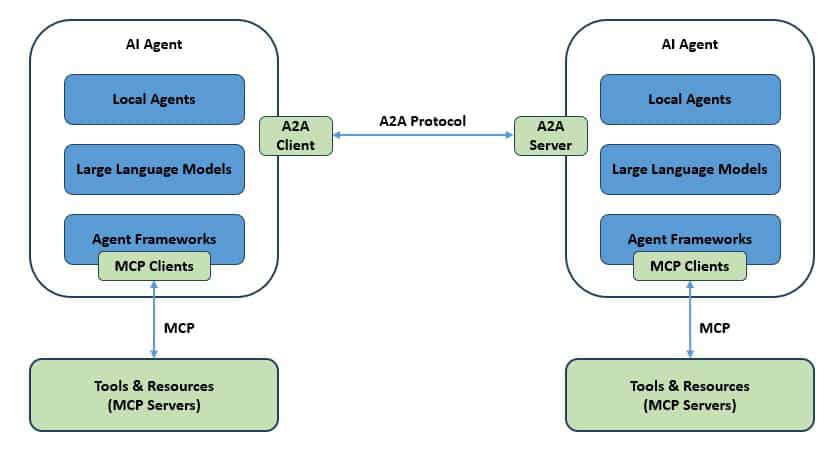
Then Google came up with the Agent2Agent Protocol (A2A). It enables AI agents built on diverse frameworks to communicate and collaborate effectively. Hence, we can seamlessly combine agents from various providers. The latest entry in this list is the Agent User Interaction Protocol (AG-UI) by CopilotKit. It’s an event-based protocol that standardises how AI agents can connect to the front-end applications.
4.4. Infrastructure Support
While we’ve covered all the important aspects of agentic AI systems, what remains is to run them reliably and securely for end-users. There are some specific concerns, like model management and hosting. But, like any other production system, we also have to handle generic concerns like monitoring and observability, security and access control, safe and ethical usage, etc.
Unlike traditional applications, AI applications are non-deterministic. Hence, the approach to troubleshooting them also differs. There have been significant advancements in this area as well. For instance, the LangChain ecosystem provides LangSmith, a unified observability and evaluation platform for developers to debug, test, and monitor AI applications:
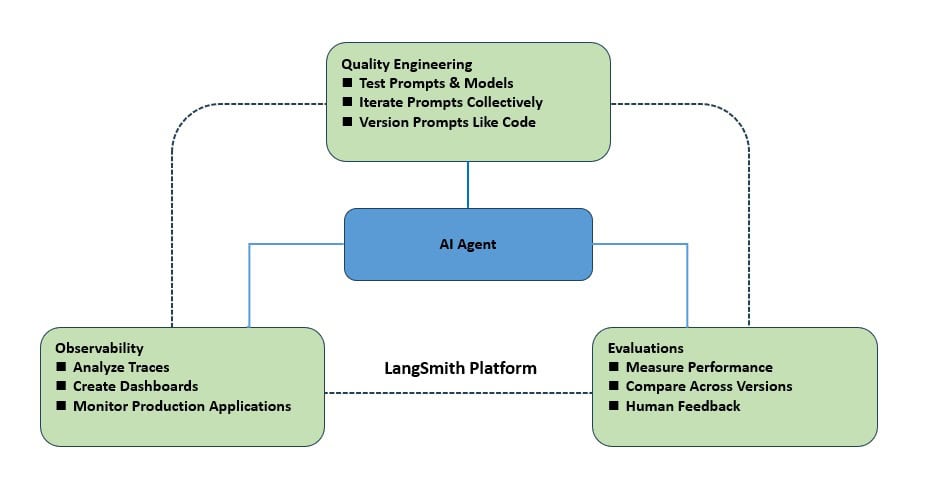
Further, we need to implement authentication and authorization systems, role-based and attribute-based access control, and provision detailed auditing and logging. Further, implementing effective guardrails is extremely critical for safe usage. These are pre-defined constraints, checks, and controls that prevent agentic AI systems from taking unintended actions.
5. Conclusion
To sum up, we’ve discussed the details of agentic AI systems in this tutorial. This included details of components that comprise such systems and the ecosystem that is growing fast to help build them. The applications of agentic AI systems are widespread, and they represent a paradigm shift in the evolution of AI. Incredible investments are being made in this area at present.
Their potential to solve real-world complex problems in different domains is increasing every day. This spans from acting as a personalised shopping assistant to monitoring financial markets and assisting in scientific discovery. While safety, data privacy, and ethical considerations remain as challenges, this is a fascinating journey that may truly one day lead us to artificial general intelligence!